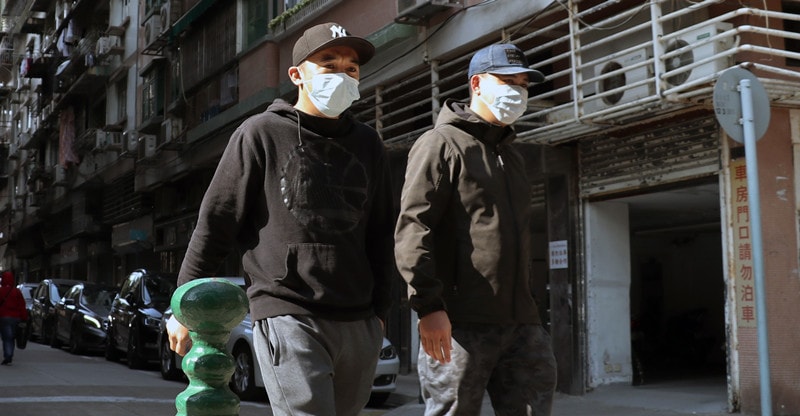Is It Allergies, The Flu, Or The Coronavirus? How To Tell The Difference
The coronavirus pandemic has taken many lives around the world. There is fear everywhere. One day you wake up with fever, body aches, and chills. How do you tell if it’s allergies, flu, or the coronavirus? You might be under the weather and that doesn’t mean you are suffering from coronavirus.
Let’s find out how to tell the difference.
Allergies
Seasonal allergies happen during certain times of the year. Mostly seasonal allergy symptoms are seen when trees, weeds, and grasses release pollen particles. People who have seasonal allergies, their immune system releases certain chemicals to defend against allergens, and that causes allergy symptoms.
Symptoms of Allergy
• Sneezing
• Runny nose
• Cough
• Nasal congestion
• Watery eyes
• Headaches
• Fatigue
In the spring season, pollen is the most common cause of allergies. From plants, pollen floats through the air. Pollen wreak havoc on the body’s immune system of those who are allergic to pollen.
In springtime allergies, the body’s immune system releases histamines to fight the allergens in your body; it triggers symptoms such as itchy eyes or runny nose. It is also seen that allergy symptoms increase on windy days when there is a high pollen count in the air.
If you suffer from allergies, you can take over the counter medications such as antihistamines. Nasal spray can be used to decongest and reduce inflammation in sinuses. You can also use eye drops to get relief from watery eyes.
To find the cause of the allergy, your healthcare professional would do the following tests:
1. The liquid form of the allergen is dropped onto the skin surface, and the area is pricked with a pricking device. If the person reacts to the allergen, the result will be the swelled skin area.
2. A small quantity of allergen is injected just under the skin. If after 15 minutes, something like a mosquito bite forms, it means you are allergic.
Flu
Flu or seasonal influenza mostly comes furiously. Flu is a respiratory infection caused by a virus. It affects your throat, nose, and lungs. Flu can last from 5 to 7 days.
Symptoms of the Flu
• Fever and/or chills
• Fatigue
• Cough (usually dry)
• Runny nose
• Aches and pains
• Sore throat (sometimes)
• Diarrhea (sometimes in children)
Vaccination is a great way to prevent the flu. If, after the flu shot, you are still getting the flu, your symptoms are mild as compared to people who did not get the flu shot. During the flu, it’s best to take rest and plenty of fluids. You can use acetaminophen (Tylenol) or ibuprofen (Advil, Motrin) medicines.
You need to remember that antibiotics won’t be of any help in viral infections. Normally, the infection needs to run its course, so it’s best to just wait and watch. But if your viral symptoms get better and then return suddenly, it’s best to contact your healthcare provider.
Coronavirus
Coronavirus is an infectious disease, which is spreading quickly worldwide. COVID-19 can cause severe illness in people of different age groups. Older people and people with underlying health conditions — like diabetes, heart disease, and lung disease are at higher risk of developing serious COVID-19 infection. As of now, there is no cure or vaccine for COVID-19.
Symptoms of COVID-19
• Fever and/or chills
• Shortness of breath or difficulty breathing
• Cough (usually dry)
• Aches and pains (sometimes)
• Sore throat
• Tiredness
• Headaches
The virus that causes COVID-19 gets transmitted from an infected person to a healthy one through droplets generated when an infected person exhales, coughs, or sneezes. These droplets are not light to hang in the air and fall on floors or surfaces quickly.
When you are within close proximity of an infected person, the virus can be transmitted by breathing. If you touch an infected surface and then touch your eyes, mouth, or nose, you can get COVID-19.
You can be infected by breathing in the virus if you are within or by touching a contaminated surface and then your eyes, nose, or mouth.
To save yourself from COVID-19, wear a mask while going out and refrain from touching your face. Wash your hands frequently with soap and water and carry a sanitizer.
If you have the symptoms of COVID-19, it’s important for the safety of you and those around you to get tested. Nowadays, you can get tested without leaving your house with in home testing services like Drip Hydration, which offers both antibody and nasal swab tests with fast results
To Conclude
Though all these diseases have similar symptoms, they are different. Allergy is caused by allergens, and not everyone gets seasonal allergies.
Influenza and COVID-19 are different from each other. The speed of transmission is different of both these viruses. When compared to COVID-19, influenza has a shorter median incubation period and a shorter serial interval, i.e., the time between successive cases. For COVID-19, the serial interval is estimated to be 5-6 days, while for the influenza virus, the serial interval is 3 days.
COVID-19 and influenza viruses are similar in disease presentation. They can cause either mild or severe illness and even death in some cases. Both of these viruses get transmitted by contact and droplets. Health measures such as washing your hands frequently and good respiratory etiquette like coughing into a tissue and immediately disposing of the tissue should be maintained.
Author Bio: Alexa Stewards is a content writer with a proven track record of quality content generation. Currently working with Index of Science, she shares valuable insights on Health & Wellness. Apart from writing, she is a Netflix-freak and a voracious reader.



